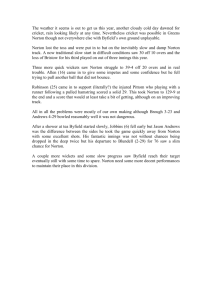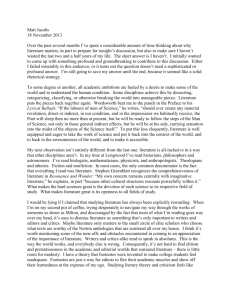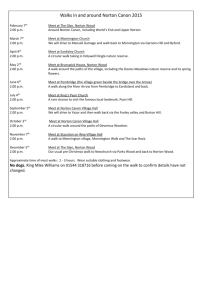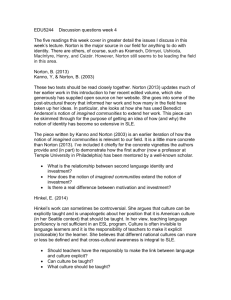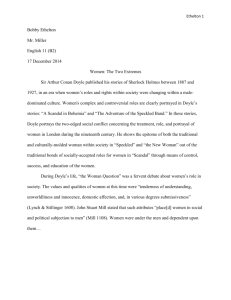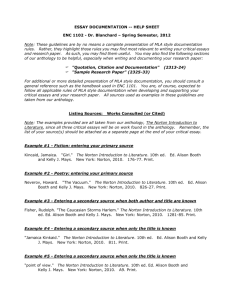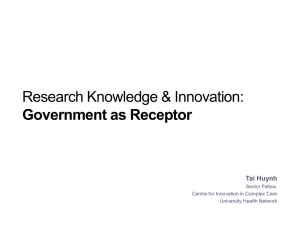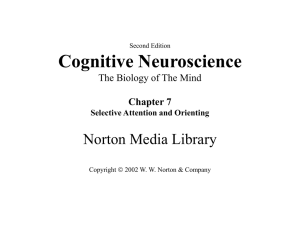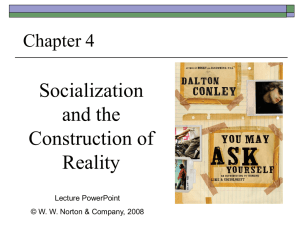Guest Lecture for Seth Greenberg`s Psy 110
advertisement
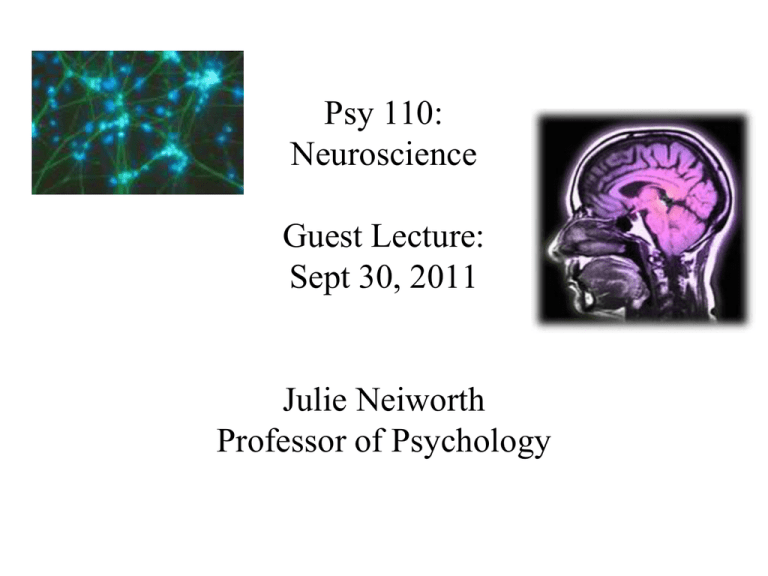
Psy 110: Neuroscience Guest Lecture: Sept 30, 2011 Julie Neiworth Professor of Psychology How are mind processes accomplished in the brain? Step 1: hands clasped: finger pointing problem. Step 2: twisted hands clasped: same problem. What does this tell you about brain processing of visual information and about directing movement? W. W. Norton Levels of Analysis W. W. Norton receive Send out…. W. W. Norton W. W. Norton receive Axons send out… W. W. Norton W. W. Norton W. W. Norton neurotransmitter W. W. Norton W. W. Norton Adapted from Kandel, E.R. Schwartz, J.H., and Jessell, T.M. (Eds.), Principles of Neural Science, 3r edition. Norwalk, Connecticut: Appleton & Lange, 1991. Copyright © 1991 by Appleton & Lange Adapted from Kandel, E.R. Schwartz, J.H., and Jessell, T.M. (Eds.), Principles of Neural Science, 3rd edition. Norwalk, Connecticut: Appleton & Lange, 1991. Copyright © 1991 by Appleton & Lange. How is information transmitted? • Myelinated axons help to transmit further (keep signal stronger) • Rate of firing can enhance chemical changes to get to threshold: temporal summation • Number of cells firing on to postsynaptic cell can influence amount of change chemically/electrically: spatial summation. How we use neuron changes to track brain states • PET scans – radioactive glucose at areas of excitation • fMRI – deoxygenated blood at areas of excitation • EEG – track neuronal firing at the surface, extrapolate about groups of neurons OTHERWISE: – CAT scans – find lesions, permanent – MRI scans – find tissue weaknesses, permanent Adapted from Purves D., Augustine, G., and Fitzpatrick, D. (2001). Neuroscience, 2nd edition. Sunderland MA: Sinaur Associates IV. Imbalances in nt systems: Their effects. IV. Imbalances in nt systems: Their effects. Adapted from Purves D., Augustine, G., and Fitzpatrick, D. (2001). Neuroscience, 2nd edition. Sunderland MA: Sinaur Associates Not enough dopamine: Parkinson’s disease, originating from substantia nigra and basal ganglia IV. Imbalances in nt systems: Their effects. Adapted from Purves D., Augustine, G., and Fitzpatrick, D. (2001). Neuroscience, 2nd edition. Sunderlan MA: Sinaur Associate Too much dopamine in motor areas: Tourette’s syndrome. Schizophrenia Paranoid delusions. Mild hallucinations. IV. Imbalances in nt systems: Their effects. Adapted from Purves D., Augustine, G., and Fitzpatrick, D. (2001). Neuroscience, 2nd edition. Sunderland MA: Sinaur Associates Too much dopamine: W. W. Norton W. W. Norton W. W. Norton John: Damage between occipital and parietal W. W. Norton Clive: movie David: cap gras, John: temporal epilepsy W. W. Norton Summary: Neuronal changes help to determine how the brain processes information as you are thinking, seeing, doing. Brain structures and functions are used to understand deficits caused in particular patients. From both we build a model of how the brain supports the mind.
